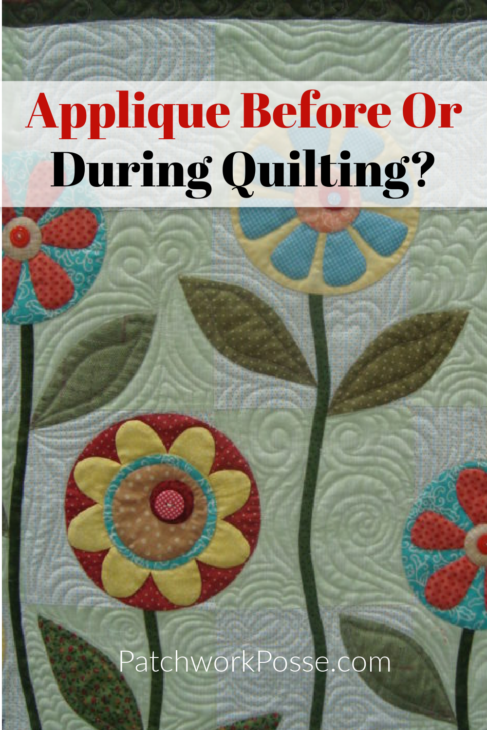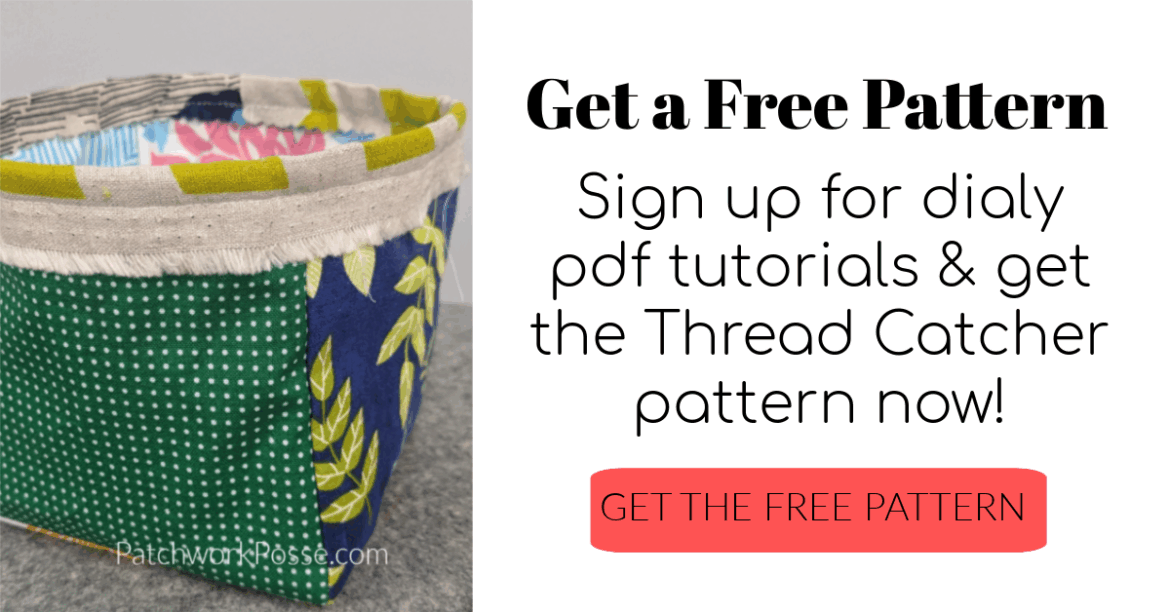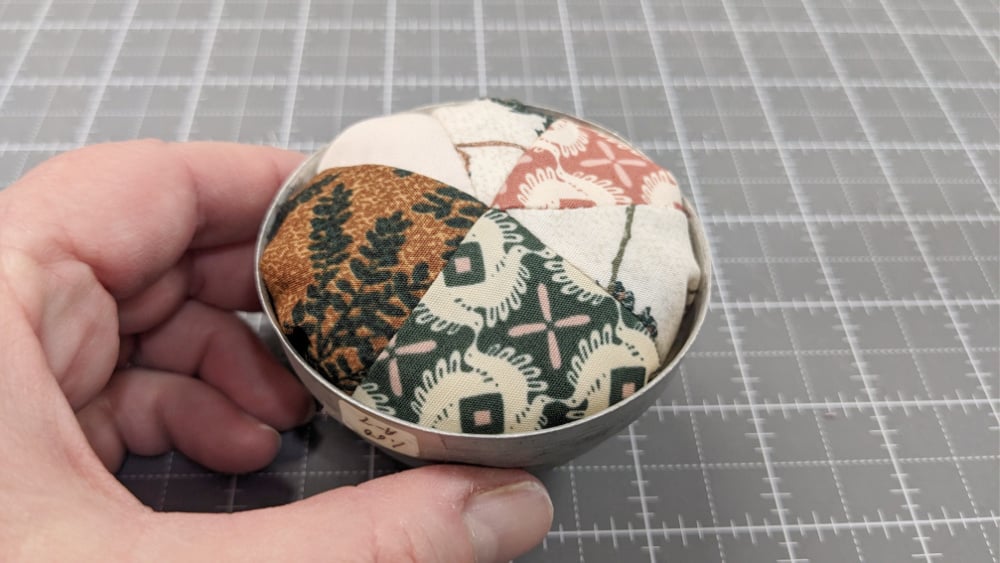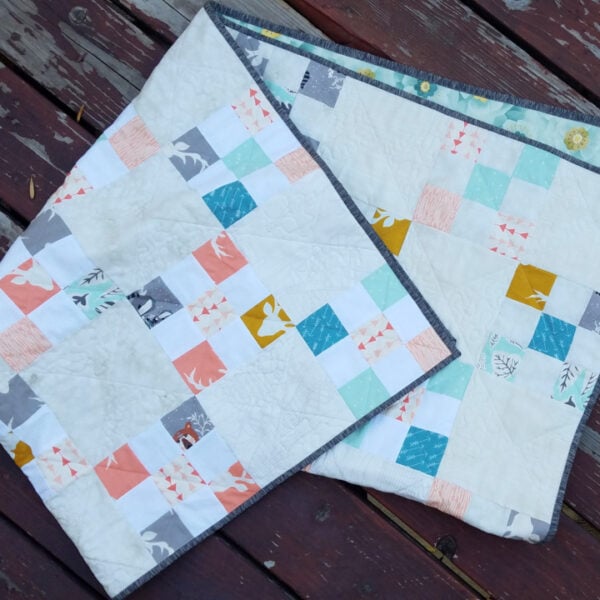
Just thought that I’d answer a great applique question.
Appliqué is a beautiful technique that quilters love for its ability to add intricate details, texture, and bold designs to quilts. One common debate among quilters is whether to appliqué before or during quilting. If you’ve ever wondered which method is better or how they differ, this post will break down the pros and cons of each approach, helping you decide which technique is best for your next project.
I am practicing the applique technique by making placemats; I have my background fabric and my lining fabric (that will wrap the background fabric to bind the edges) and my padding cut and ready to go. I will be using a quilting stitch through all three of these layers, but I need to know if I should applique my design on the background fabric PRIOR to doing the quilting design through the three layers? If I do add the applique design before I quilt the entire placemat, do I then simply stitch around the applique design knowing that this design will show on the back?

So let’s look at a few things…… it depends! haha that is always how it turns out isn’t it?
You can use the quilt as you go method and just have your applique pieces glued, or pinned in place. Then when you have all of your layers together you can sew around the outside edges and applique them down— and this will also be quilting it for you.
On the back of the project you will see the stitching of the applique + the rest of the quilting.
This method would be a great one to do if you are in a hurry. It kills two birds with one stone. I see a few issues that you might run into. Depending on how you want to sew the applique down. Obviously you are doing it by machine…. so what is your bobbin thread color going to be? If I am sewing it with raw edge applique- i am using black thread on the bottom so i don’t get little white dots on the top because of the bobbin thread being white.
Also– are you doing a satin stitch around the outside edge? This looks a little heavy on the back with the thread and again– what color is your bobbin thread?

The other option would be to machine applique the pieces, and then make your quilt sandwich and quilt it.
This allows you to choose your bobbin thread for the applique, + you can match your top thread with the applique piece. This also allows you to do a button hole stitch a tiny zig-zag, some fancy shmansy stitch on your sewing machine, or stitch with totally black thread.
So really the choice is up to you. What kind of look are you going for with the stitching? What is it’s purpose? How quick do you need it done? lol

Key Takeaways
- Appliqué Before Quilting
– This method allows you to secure your design first, providing more control and stability for intricate designs.
- Appliqué During Quilting
– This technique can save time and adds a dimensional, integrated look, as quilting stitches become part of the appliqué.
The decision to appliqué before or during quilting ultimately comes down to your project goals, desired texture, and personal quilting style. Both methods offer distinct benefits, and trying each will help you determine which approach works best for your unique creations. No matter what you choose, appliqué can elevate the design and craftsmanship of any quilt.
Hope this helps! If you have any applique suggestions— leave a comment here and let us know! I am always up for learning a new technique.

Additional Applique Resources
- Easy Kitten Applique
- Zippy Baby Quilt with Applique Tutorial
- Raw Edge Applique How to – Video
- Ways to finish your applique edges
- No Sew Banner with Star Applique
FAQ’S
What is appliqué, and why is it used in quilting?
Appliqué is a technique where pieces of fabric are sewn onto a background fabric to create designs or images. It’s a fantastic way to add texture, color, and intricate details to your quilts.
How do I secure my appliqué pieces?
You can use various methods to secure your appliqué, including pinning, using fusible webbing, or basting stitches. Make sure your pieces are well-attached before proceeding with quilting to prevent shifting.
What types of stitches are best for appliqué?
Common stitches for appliqué include straight stitches, zigzag stitches, or decorative stitches, depending on the look you want. Hand stitching is also an option for a more personalized finish.

Becky Jorgensen is the creative quilter behind Patchwork Posse, the Patchwork Planner and her online quilt group Patchworkers Plus. You can find her patterns in books, magazines, and her quilt membership. Gather your quilting supplies, organize your sewing space, explore the process of disappearing quilt blocks, or finish a free quilt pattern. I'll help you use what you have, finish what you start and make your quilting journey fun!
Follow me here: Facebook, Pinterest, YouTube







Interesting question, and one I didn’t think about when doing my latest applique. I’m participating in a Row Robin and needle-turn appliqued one piece onto the machined pieced row. I didn’t consider what will happen when the owner puts the rows all together and quilts it. I would, if it were mine, plan to quilt around the appliqued piece(s), leaving the needle-turn applique intact.
I’m not sure there is a “right” or “wrong” to this question. Perhaps it’s whatever makes you, the quilter, happy.
I always applique before quilting and outline the applique when quilting. The reason is that if I quilt and then applique the underneath of the applique wont be smooth and will in time leave an imprint on the upper fabric. By outlining the applique piece it makes it ‘pop’ out giving it dimension.
I hope this helps
that is definitly one of the benifits of applique first, then quilt. that extra little poof makes it stand out perfectly.
I totally agree with Michelle, is the way I always did.
I am from Brazil and I follow you ladies and I think your
work is amazing and would like to thank you for being so kind
and sharing with us, all the best Alice
Thanks for sharing what you do. Tractors here I come but not before I practise with different colours on some offcuts! Thankfully my wee grandson won’t be too critical.